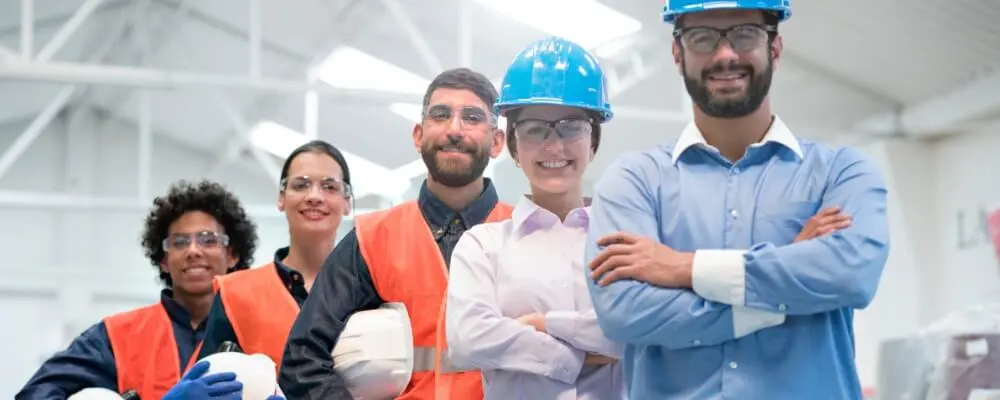Workplace health and safety are paramount as they directly influence the well-being of employees, productivity levels, and the overall reputation of an organization. A safe environment minimizes the risk of accidents, injuries, and illnesses, ensuring that employees remain healthy, motivated, and productive. Additionally, organizations prioritizing safety often see reduced absenteeism and lower medical or compensation costs while enjoying higher morale and greater employee retention.
Employees play a pivotal role in upholding this safety ethos. Their day-to-day actions, vigilance, and adherence to safety protocols ensure that theoretical safety policies translate into practical safety measures. By fulfilling their responsibilities, such as reporting hazards, wearing appropriate protective equipment, and participating in training, employees act as the first line of defense against potential risks.
Their proactive behavior safeguards their own well-being and that of their colleagues, creating a collaborative and trust-filled environment. In essence, while organizational policies lay the foundation for workplace safety, it’s the collective responsibility of the employees that truly ensures a safe and healthy working environment.
10 Key Employees Responsibilities For Health And Safety
Maintaining health and safety in the workplace is a shared responsibility between employers and employees. Here are ten key responsibilities for employees when it comes to health and safety:

1. Follow Safety Procedures
Adhering to safety procedures is fundamental for any workplace. These procedures are implemented after carefully considering the risks associated with specific tasks or environments. By following them, employees ensure their safety and create a predictable environment where coworkers know what to expect.
Ignoring or bypassing these protocols can lead to accidents, which might endanger oneself or others. For instance, if a machine comes with operating guidelines, circumventing them might cause it to malfunction or lead to a harmful situation.
2. Use Protective Equipment
Personal Protective Equipment (PPE) is the last line of defense against occupational hazards. Whether a construction worker wearing a helmet to protect against falling objects or a lab technician using gloves to avoid direct contact with chemicals, PPE is designed to reduce the risk of injury or harm.
While it might sometimes seem cumbersome or unnecessary, consistently wearing the appropriate PPE can distinguish between a routine workday and a catastrophic incident. For example, safety glasses can shield one’s eyes from flying debris, preventing potential vision loss.
3. Report Hazards
A workplace is dynamic, and hazards can arise from unforeseen circumstances or gradual wear and tear. Employees are often the first to notice these changes since they interact with the workspace daily. They play a crucial role in preventing accidents by promptly reporting any observed hazards or potential dangers.
This proactive approach helps management address risks before they escalate. A loose carpet or a malfunctioning machine might seem minor but could lead to severe injuries if left unattended.

4. Avoid Alcohol and Drugs
Working under alcohol or drugs severely impairs judgment, reflexes, and general awareness. This makes the individual vulnerable to accidents and poses risks to coworkers who might have to compensate for the impaired individual’s lack of capability.
In many sectors like transportation, manufacturing, or healthcare, a single mistake due to impaired judgment can have grave consequences, potentially leading to loss of life.
5. Attend Training
Regular training sessions equip employees with the knowledge and skills to perform their duties safely. These sessions often include updates on best practices, information on new risks, and demonstrations of proper equipment usage. By actively participating in these training sessions, employees stay updated on the latest safety protocols and are reminded of the importance of safety.
This continuous learning approach ensures they can adapt to changing environments or requirements, making them efficient and safety-conscious in their roles.
6. Report Incidents
The importance of reporting any and all incidents cannot be overstressed. When an injury, near miss, or accident occurs, immediate reporting helps the management understand the exact nature of the incident. This enables them to take corrective actions promptly, possibly preventing similar incidents in the future.
Furthermore, by documenting these incidents, organizations can identify patterns, areas of high risk, and potential areas of improvement. Even seemingly minor occurrences might be indicative of larger, systemic issues. Thus, early reporting can be instrumental in fostering a safer environment and ensuring necessary measures are in place to prevent recurrence.

7. Stay Informed
Knowledge is one of the most potent tools for ensuring workplace safety. Employees should be well-acquainted with the company’s health and safety policies. This enables them to adhere to set protocols and act swiftly in times of emergency. Knowing the location of first aid kits means immediate first aid can be administered, potentially preventing a minor injury from escalating.
Being aware of the location of emergency exits ensures quick evacuation during critical situations, and familiarity with the placement of fire extinguishers can be pivotal in containing a fire before it spreads.
8. Keep Workspace Clean
Orderliness and cleanliness are directly proportional to workplace safety. A cluttered workspace can lead to tripping hazards, misplaced tools, or obscured dangers. For example, a spill left unattended might cause someone to slip, or an electrical wire left exposed might lead to an electrocution risk.
Ensuring that tools and equipment are returned to their designated places after use reduces the likelihood of accidents and makes the work environment more efficient. Proper waste disposal, especially of hazardous materials, further ensures that the workspace remains safe and reduces potential health hazards.
9. Cooperate with Supervisors
A harmonious and collaborative relationship between employees and supervisors is crucial for workplace safety. Managers and supervisors often view organizational goals and safety protocols more broadly. By cooperating with them, employees can get clarity on safety procedures and provide ground-level feedback, which might be crucial for refining safety policies.
Participation in activities like safety audits showcases an employee’s commitment to safety and can highlight areas that might have been overlooked. Open communication channels ensure that supervisors and employees are on the same page regarding safety.

10. Promote Safety
A safety-conscious culture is one where every individual plays their part. Encouraging peers to prioritize safety has a multiplier effect: when everyone is vigilant, the chances of oversight are reduced dramatically. Sharing insights or experiences about potential hazards fosters a collective knowledge base, ensuring everyone is aware and prepared.
By advocating for safety, employees can create a collaborative environment where everyone looks out for each other, leading to a safer workplace that is more harmonious and productive.
Conclusion
To sum up, employees are crucial in ensuring workplace health and safety. This blog emphasizes the interdependent relationship between individual actions and the organization’s well-being. Employees are responsible for following established safety procedures and promoting a safety-conscious culture among colleagues. By doing so, they contribute to safeguarding personal and collective health. While organizations provide safety guidelines, employees’ consistent and vigilant actions bring these protocols to life, resulting in a thriving, productive, and safe workplace for everyone.

